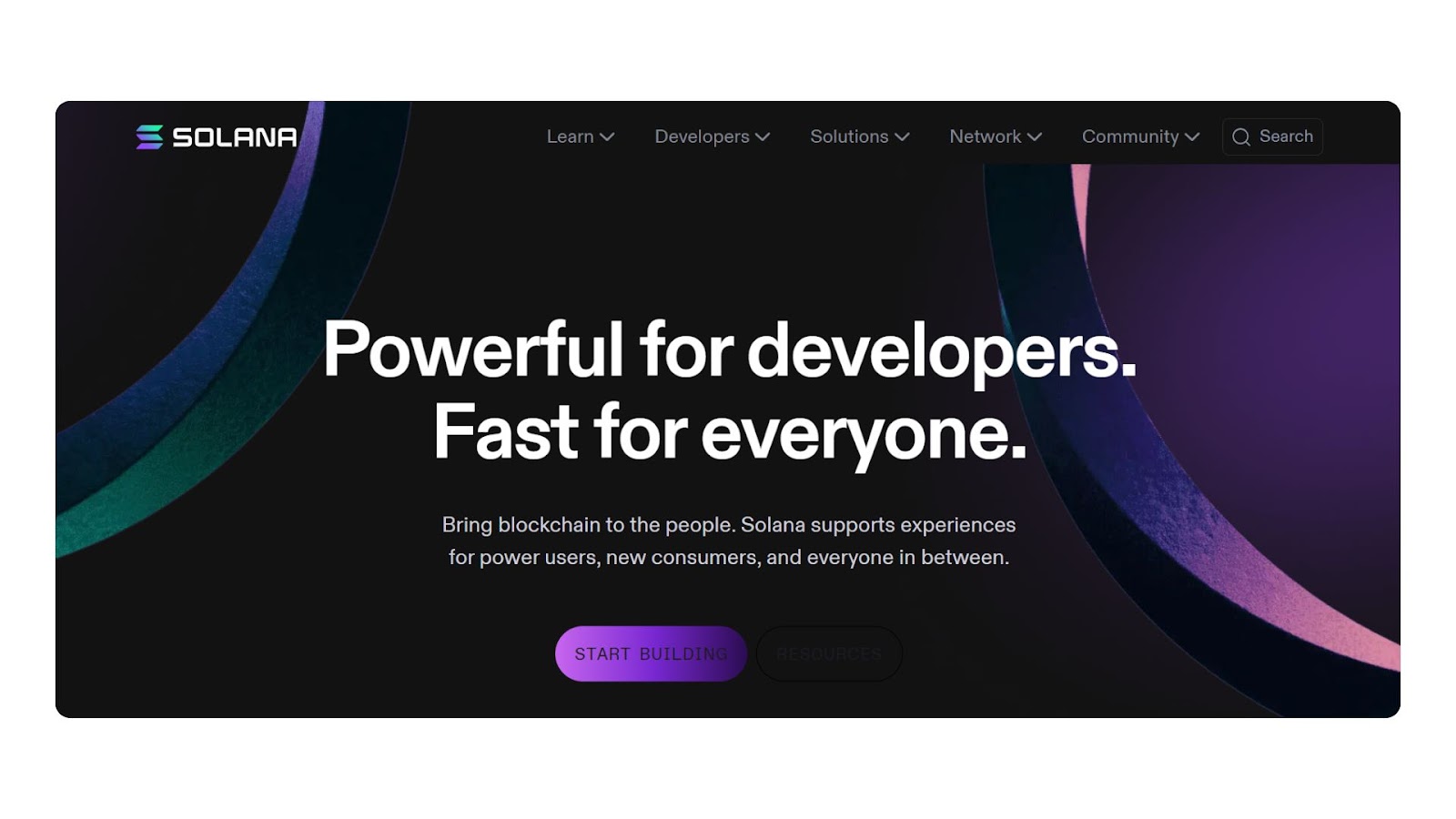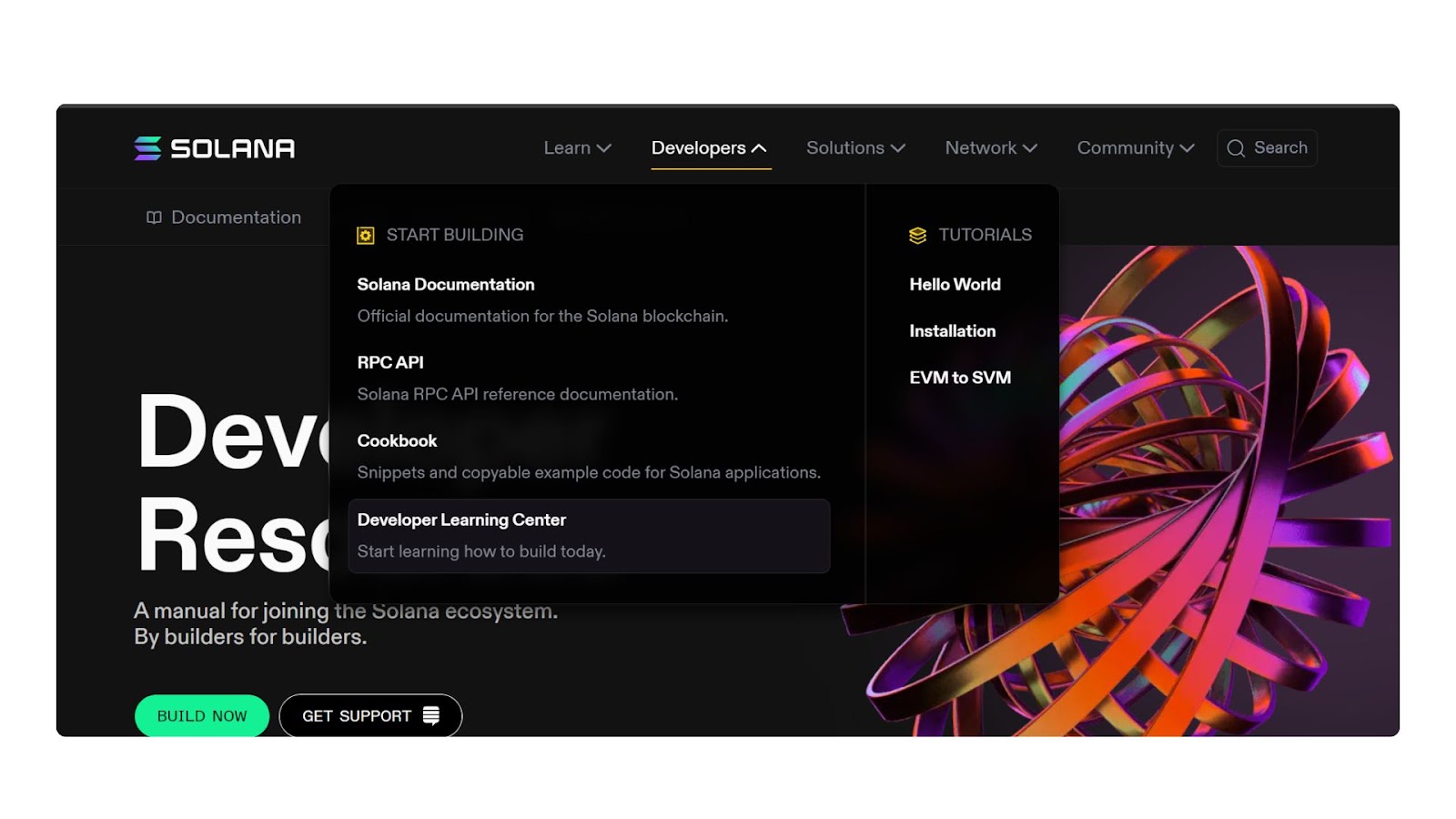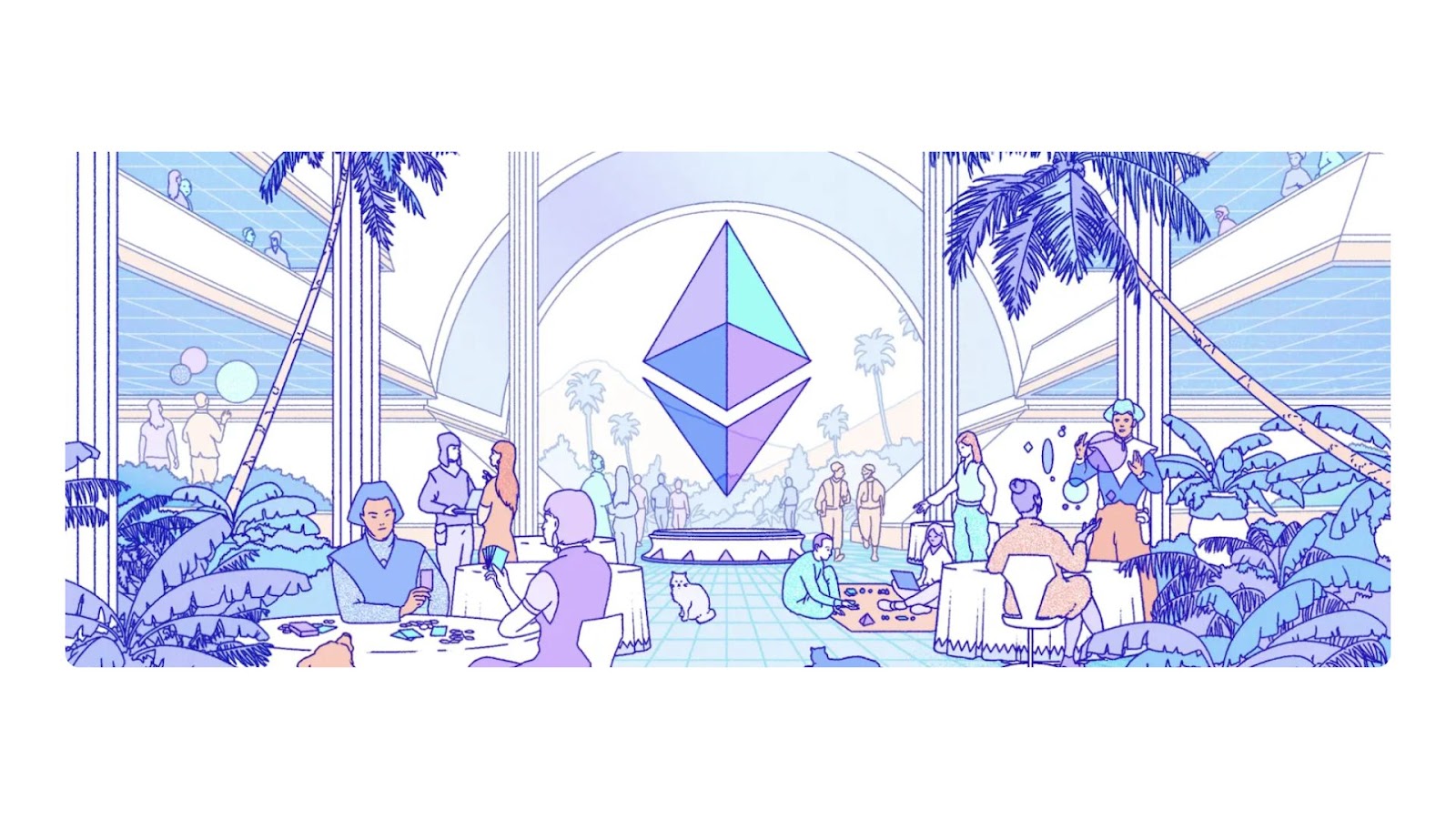Solana vs Ethereum: Which is Better in 2025? (Pros and Cons)
Key Takeaways
- Transaction Speed: Solana processes 65,000+ TPS vs Ethereum's 30 TPS, making it 2,000x faster for real-world applications
- Cost Efficiency: Solana transactions cost $0.00025 on average, while Ethereum ranges from $5-50, representing a 20,000x cost difference
- Developer Ecosystem: Ethereum hosts 4,000+ dApps with $50B+ TVL, while Solana has 500+ dApps with $8B TVL but growing 300% annually
- Decentralization Trade-off: Ethereum leads with 700,000+ validators vs Solana's 1,500 validators, offering superior censorship resistance
Introduction
The blockchain platform debate of Solana vs Ethereum has intensified in 2025 as both networks evolve to capture the $2 trillion crypto market. While Ethereum remains the undisputed smart contract pioneer with 70% market dominance, Solana has emerged as the performance leader, processing over 50% of global DEX volume. This comprehensive comparison examines which blockchain better serves users, developers, and investors in today's rapidly evolving cryptocurrency landscape.
What is Solana?
Solana is a high-performance blockchain designed for speed and scalability, launched in 2020 by Anatoly Yakovenko. The network utilizes a unique Proof of History (PoH) consensus mechanism combined with Proof of Stake, enabling theoretical throughput of 65,000 transactions per second.
Built specifically to address blockchain scalability limitations, Solana has become the preferred platform for high-frequency applications like decentralized exchanges, gaming, and meme coins. The network's architecture prioritizes raw performance, making it ideal for applications requiring instant finality and minimal costs.

Solana Development Environment
Solana provides a modern, performance-oriented toolkit:
- Languages: Rust (primary), C, C++
- Framework: Anchor (similar to Ruby on Rails)
- Libraries: Solana Web3.js, Metaplex
- Developer count: 3,000+ active developers
- Documentation: Growing rapidly, primarily English
While Solana's Rust requirement creates a steeper learning curve, it attracts experienced systems programmers building high-performance applications.

Solana Decentralisation and Security:
Solana operates with around 1,500 validators across 40+ countries, without a fixed minimum stake requirement. While it uses a single client implementation (Solana Labs), this streamlined structure helps deliver high-speed performance. Despite facing five major outages between 2021 and 2023, Solana has achieved 99.9% uptime in 2024–2025, with improved incident response and evolving security tooling. In the DeFi space.
Solana is rapidly growing, boasting over $10B+ in total value locked and handling 50% of global DEX volume daily through protocols like Jupiter, Raydium, Marinade, and Kamino. On the NFT side, Solana’s $2B market is driven by low minting costs and innovations like compressed NFTs, with top collections such as Mad Lads, DeGods, and Claynosaurz traded on platforms like Magic Eden and Tensor.
Solana Pros and Cons:
Advantages of Solana (Pros)
- Lightning-Fast Speed: Boasting 400-millisecond block times and 2.5-second finality, Solana offers near-instant transactions. This makes the Solana network ideal for high-frequency trading, gaming, and other time-sensitive applications.
- Ultra-Low Transaction Fees: With an average cost of just $0.00025 per transaction, Solana makes micropayments and high-volume trading economically viable, setting it apart from more expensive blockchains.
- Massive Throughput: The network reliably processes 3,000-5,000 real-world transactions per second (TPS), preventing the congestion issues that can plague other chains during peak events like popular NFT mints.
- Dominant DeFi Ecosystem: Solana frequently handles over 50% of global decentralized exchange (DEX) volume. This leadership in DeFi attracts deep liquidity and innovative financial projects.
- Pioneering Technology: Its unique architecture enables innovations impossible on slower chains, such as compressed NFTs (cNFTs) for hyper-scale minting and local fee markets to manage network demand efficiently.
Disadvantages of Solana (Cons)
- Historical Instability: While stability has been excellent with 99.9%+ uptime throughout 2024 and 2025, a history of major outages in prior years remains a consideration for risk-averse institutional users.
- Less Battle-Tested: As a younger blockchain (launched in 2020), its ecosystem and smart contract tooling have a shorter security track record than platforms that have been operating for much longer.
What is Ethereum?
Ethereum, created by Vitalik Buterin in 2015, pioneered programmable smart contracts and remains the foundation of decentralized finance (DeFi). Following the successful Merge to Proof of Stake in 2022, Ethereum has focused on sustainability and decentralization while maintaining its position as the most trusted blockchain for high-value transactions.
The network's extensive ecosystem includes the vast majority of DeFi protocols, NFT marketplaces, and enterprise blockchain solutions. Ethereum's EVM (Ethereum Virtual Machine) has become the industry standard, with dozens of chains offering EVM compatibility.

Ethereum Development Environment
Ethereum offers the most mature development ecosystem:
- Languages: Solidity (primary), Vyper
- Frameworks: Hardhat, Truffle, Foundry
- Libraries: Web3.js, Ethers.js, OpenZeppelin
- Developer count: 20,000+ active developers
- Documentation: Extensive, multi-language support
The Ethereum ecosystem benefits from seven years of battle-testing, comprehensive auditing tools, and established security best practices.

Ethereum Decentralisation and Security
Ethereum leads in decentralization, with over 700,000 validators spread across 80+ countries and a minimum staking requirement of 32 ETH. Its diverse client implementations and consistent uptime since 2016 offer strong censorship resistance and network resilience. Ethereum secures more than $50B across major DeFi protocols like Uniswap, Aave, MakerDAO, and Curve, with daily volumes between $2–5B. ETH has $86.5B Total Value Locked (TVL) in DeFi.
Security is backed by robust tooling and a proven upgrade history. In the NFT space, Ethereum remains dominant with a $10B+ market cap, featuring iconic collections like CryptoPunks and BAYC. It is supported by leading marketplaces such as OpenSea and Blur and is widely recognized as the cultural origin of NFTs.
Ethereum Pros and Cons
Advantages of Ethereum
Unmatched Security: Ethereum's 700,000+ validators across 80+ countries create the most decentralized blockchain network. This massive validator set makes it ideal for high-value DeFi protocols and institutional treasury management.
Proven Reliability: Zero downtime since 2016 and $50B+ secured in DeFi protocols demonstrates battle-tested stability. This track record attracts enterprises and institutional investors requiring absolute certainty.
Largest Developer Network: With 20,000+ active developers and mature tooling like Hardhat and OpenZeppelin, Ethereum offers the deepest talent pool and most extensive resources for building secure applications.
Regulatory Clarity: Classified as a commodity, not a security, Ethereum provides regulatory certainty for compliant tokenization and institutional participation without legal ambiguity.
Deep Liquidity: As DeFi's birthplace, Ethereum hosts the largest protocols like Uniswap, Aave, and MakerDAO, offering unmatched capital efficiency for complex financial operations.
Disadvantages of Ethereum
High Transaction Costs: Simple transfers cost $5-20, while DeFi interactions reach $50-150, making Ethereum impractical for micropayments or frequent trading without significant capital.
Slow Performance: With 12-second blocks and 12-15 minute finality, Ethereum can't support real-time applications or high-frequency trading effectively.
Scalability Limits: Capped at 30 TPS, Ethereum faces regular congestion during NFT drops or popular events. Layer 2 solutions like Arbitrum, Optimism, Base, Polygon, and zkSync help but add complexity and fragment liquidity.
Complex UX: Gas estimation, failed transactions, and MEV exploitation create barriers for newcomers, hindering mainstream adoption despite years of development.
Performance Comparison
Transaction Speed and Throughput
Solana's parallel processing architecture allows multiple transactions to execute simultaneously, while Ethereum processes transactions sequentially. This fundamental difference creates Solana's massive speed advantage for crypto trading and time-sensitive applications.
Network Fees Analysis
Ethereum's Layer 2 solutions like Arbitrum and Optimism reduce costs to $0.10-1.00 per transaction, but still remain 100-1000x more expensive than Solana.
Investment Perspective
Ethereum Investment Thesis
Bullish factors:
- Bitcoin of smart contracts with proven track record
- Deflationary tokenomics post-EIP-1559
- Institutional adoption accelerating
- ETF approval driving mainstream access
- Layer 2 scaling solutions maturing
Risk factors:
- Competition from faster blockchains
- Regulatory scrutiny on DeFi
- Technical complexity for users
- High fees limiting adoption
Solana Investment Thesis
Bullish factors:
- Massive performance advantages
- Growing developer mindshare
- Memecoin and consumer app dominance
- Strategic partnerships (Visa, Google Cloud)
- Backpack Exchange integration strengthening ecosystem
Risk factors:
- Validator centralization
- Dependence on Solana Labs
- Regulatory questions around securities classification
Future Development Roadmaps
Ethereum 2025-2026 Priorities
- Danksharding: Massive scaling through data availability
- Account abstraction: Simplified user experience
- Single slot finality: Faster transaction confirmation
- Statelessness: Improved node efficiency
- Quantum resistance: Future-proof cryptography
Solana 2025-2026 Priorities
- Firedancer client: Second validator implementation
- Concurrent Merkle Trees: Enhanced state compression
- Token-2022 adoption: Advanced token standards
- Mobile integration: Saga phone ecosystem
- Enterprise features: Privacy and compliance tools
Conclusion
The Solana vs Ethereum debate in 2025 isn't about choosing a winner—it's about understanding which blockchain best serves specific needs. Ethereum remains the gold standard for security, decentralization, and high-value applications, while Solana excels at performance, cost-efficiency, and consumer-facing products.
For institutional DeFi and applications requiring maximum security, Ethereum's battle-tested infrastructure provides unmatched reliability. For trading, gaming, and applications needing instant finality at minimal cost, Solana offers compelling advantages.
The future likely holds a multi-chain ecosystem where both platforms thrive in their respective niches. Smart developers and investors are positioning themselves across both networks, leveraging Ethereum's stability and Solana's innovation to capture opportunities in the evolving crypto market.
Learn more about Backpack
Exchange | Wallet | Twitter | Discord
Disclaimer: This content is presented to you on an “as is” basis for general information and educational purposes only, without representation or warranty of any kind. It should not be construed as financial, legal or other professional advice, nor is it intended to recommend the purchase of any specific product or service. You should seek your own advice from appropriate professional advisors. Where the article is contributed by a third party contributor, please note that those views expressed belong to the third party contributor, and do not necessarily reflect those of Backpack. Please read our full disclaimer for further details. Digital asset prices can be volatile. The value of your investment may go down or up and you may not get back the amount invested. You are solely responsible for your investment decisions and Backpack is not liable for any losses you may incur. This material should not be construed as financial, legal or other professional advice.


